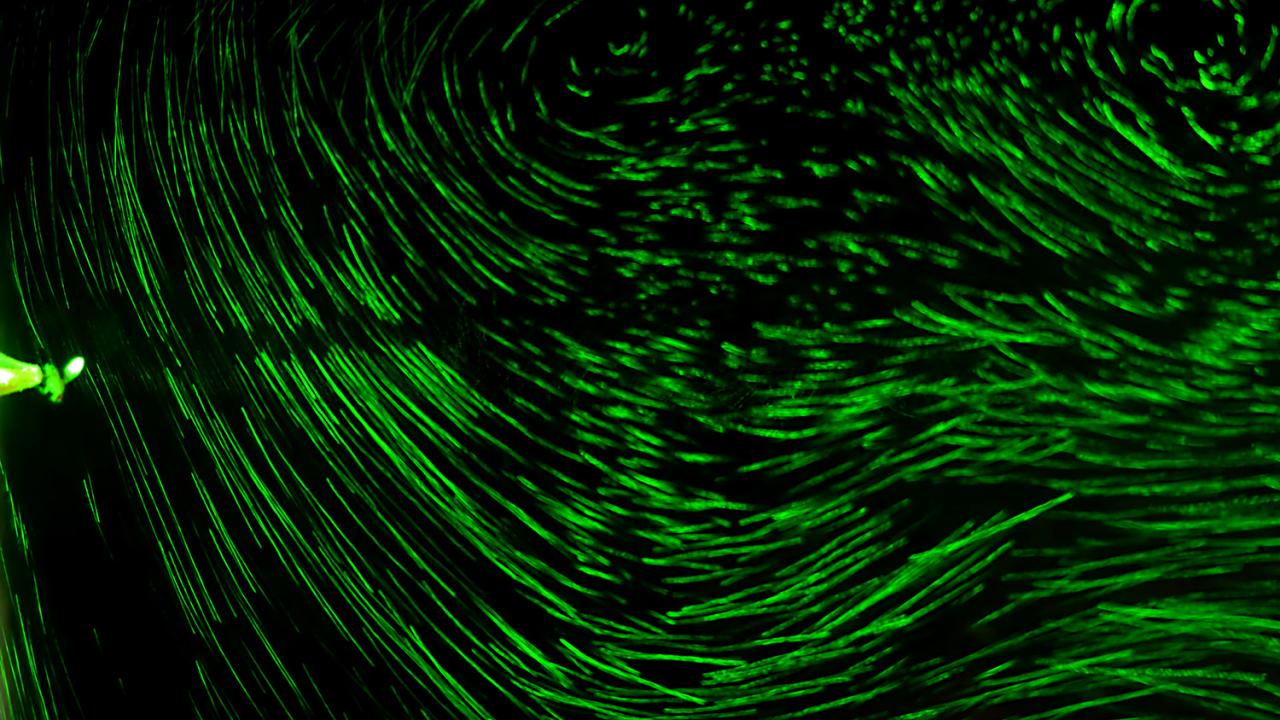
Flight Turbulence: New Study Explores How Flies Navigate Unstable Convective Air
Quick Summary
- A new study provides detailed data on how insects navigate convection cells
- These flights required insects to invest more time and energy, with around 34% failing to maintain flight trajectory
- The study highlights challenges insects might face in urban environments, where surface temperatures soar
When insects migrate over vast distances, many take advantage of a natural phenomenon called thermal convection, which causes flow movement when air at different temperatures interact. Hitching a ride on invisible rollercoasters called convection cells, insects—like aphids and spiders—follow the flow of warm air upwards and cold air downwards.
“They are floating up to 3,000 feet,” said Victor Ortega-Jimenez, an assistant project scientist in the Combes Lab at UC Davis, of this movement.
“All these clouds of insects are floating up there and moving in these convection cell patterns.”
Ortega-Jimenez has long wondered about the aerodynamics of insect flight in convection cells. In a new study appearing in the Journal of the Royal Society Interface, Ortega-Jimenez and Associate Professor Stacey Combes, Department of Neurobiology, Physiology and Behavior, provide detailed data on how fruit flies (Drosophila melanogaster) maintain stability while flying through convection cells on a small scale.
According to the research, flight through convection cells required more time and energy from the majority of flies and about one-third of the flies were unable to complete the experimental flight task through convection cells. The research highlights the challenges insects might face in urban environments, where soaring surface temperatures can lead to multiple convection cells capable of disrupting flight patterns.
“One problem with these artificial environments is they have pavement, concrete, glass and metals, which are prone to heating up,” said Ortega-Jimenez. “Because it’s really hot, the convection processes are really intense and for fruit flies or small insects, they have hard time because they are challenged by these intense flows.”
A chamber of convection cells
In the experiment, Ortega-Jimenez created a 22 centimeter-long flight chamber with a bottom heated by an infrared lamp and a top cooled by ice. This setup created two distinct convection cells for the flies to traverse during the experiments. Ortega-Jimenez tested 32 flies in still air conditions and then in convective flow conditions.
“Fruit flies are a good biological model because they are—evolutionarily speaking—adapted to deserts and also to cities,” said Ortega-Jimenez, noting that this might make them better adapted to deal with aerial environments saturated with convection cells.
According to the research, after entering the chamber, the flies responded to convective flows by changing their body angle, decreasing flight speed and increasing flapping frequency of their wings. They also flew in a curved, wave-like manner.
“When fruit flies reduce speed and have a more curvy flight path, it tells you that they are investing more time and energy.” - Victor Ortega-Jimenez.
Despite flow speeds in the convection chamber being modest compared to typical outdoor airflow conditions, 34 percent of the flies failed to maintain a controlled flight trajectory and fell to the ground before reaching the landing target. Flies that failed the experiment flew slower in still air conditions and had smaller wing areas.
“Wing size is a very important parameter in aerodynamics because lift, the force that makes the insect stay up in the air, is related to speed and the wing surface area,” said Ortega-Jimenez. “If you have low speed and low wing area, then you have low lift.”
Flies that successfully traversed the convective cells were faster in still air conditions and boasted larger wing areas.
The researchers also found that 24 percent of the successful flies followed a curved path resembling the flow of the convection vortices, showing that some individuals ride the flow of the vortices. These individuals accomplished the flight task in a shorter amount of time and at a higher speed than they did in still air conditions.
Trouble in a turbulent environment

While fruit flies are adapted to living in desert-like conditions, the research suggests that pockets of convective vortices can
have detrimental effects on fly flight patterns and behavior. With maximum ground temperatures in desert and urban environments reaching from 158 to 212 degrees Fahrenheit, surface environments can be particularly tricky for small insects to navigate, according to the research.
“This could significantly diminish the short-range dispersal of some organisms, especially for individuals and species with low aerodynamic capacities, like aphids, midges or thrips,” said Ortega-Jimenez.
The study’s results suggest that flies are adversely affected by thermal convection, which increases near surfaces heated by processes like solar radiation and fermentation. So next time you see a fly hovering around on a sweltering day, tip your hat. That flight requires might.
The study was supported by the National Science Foundation.
